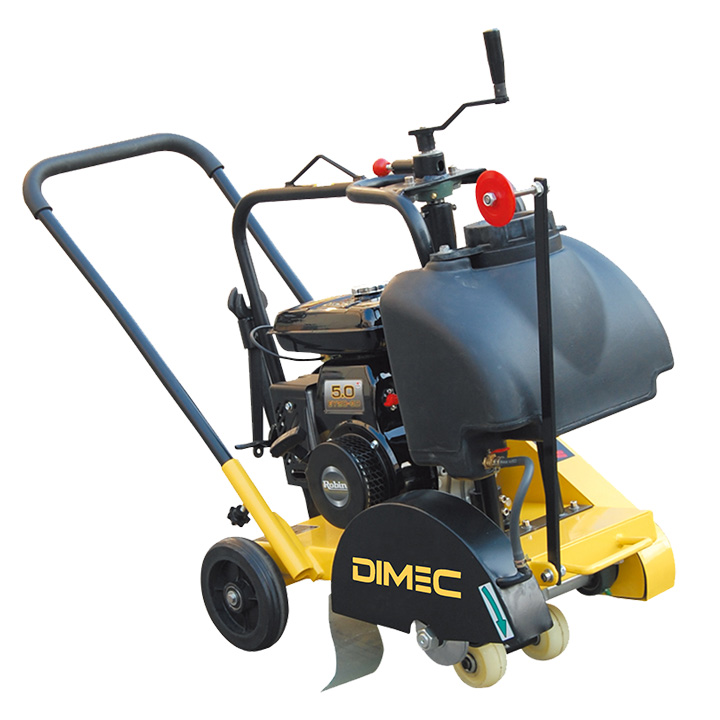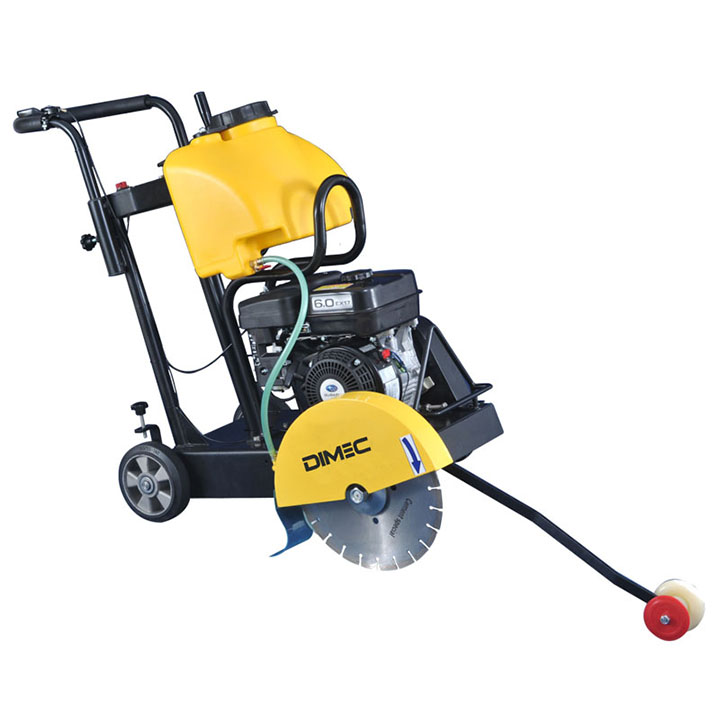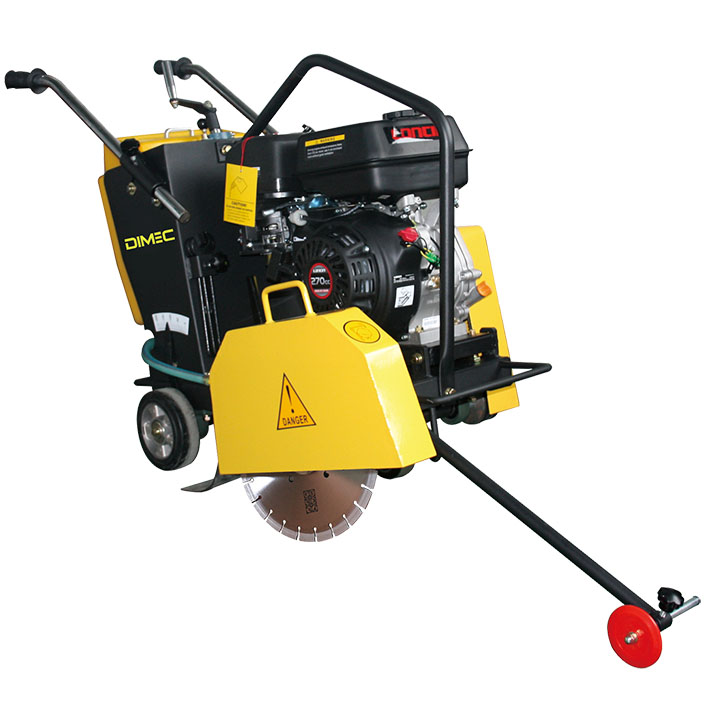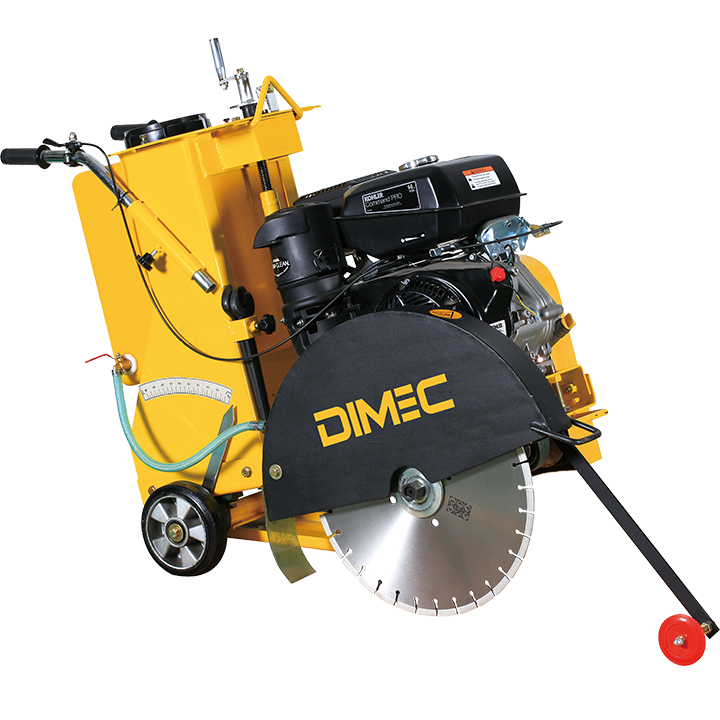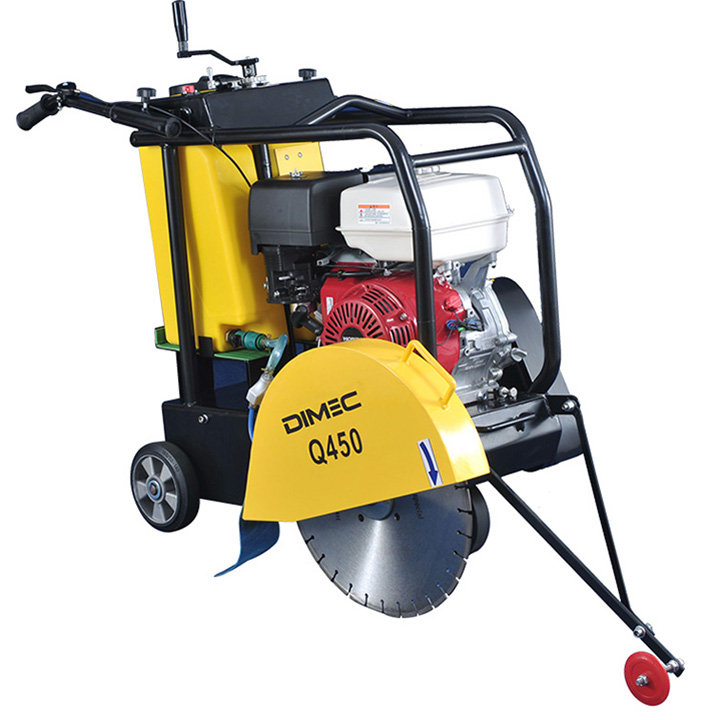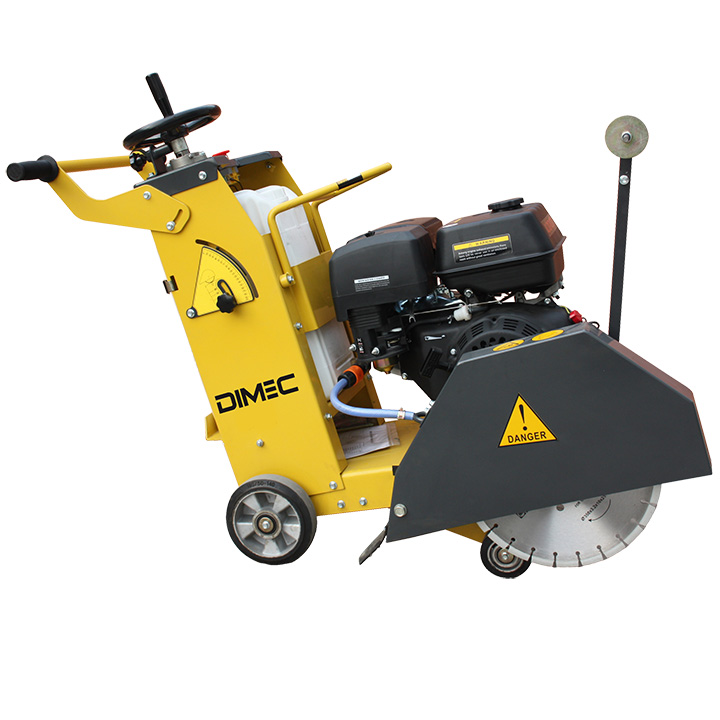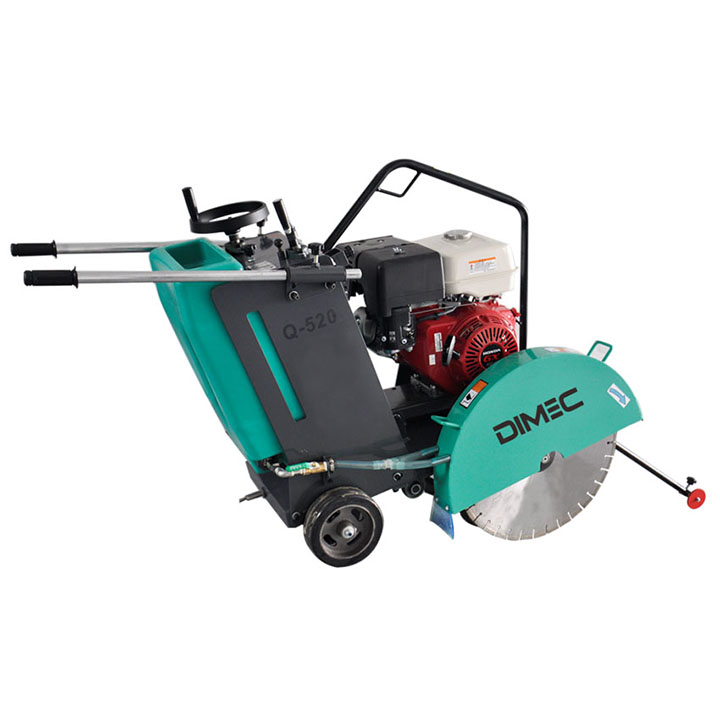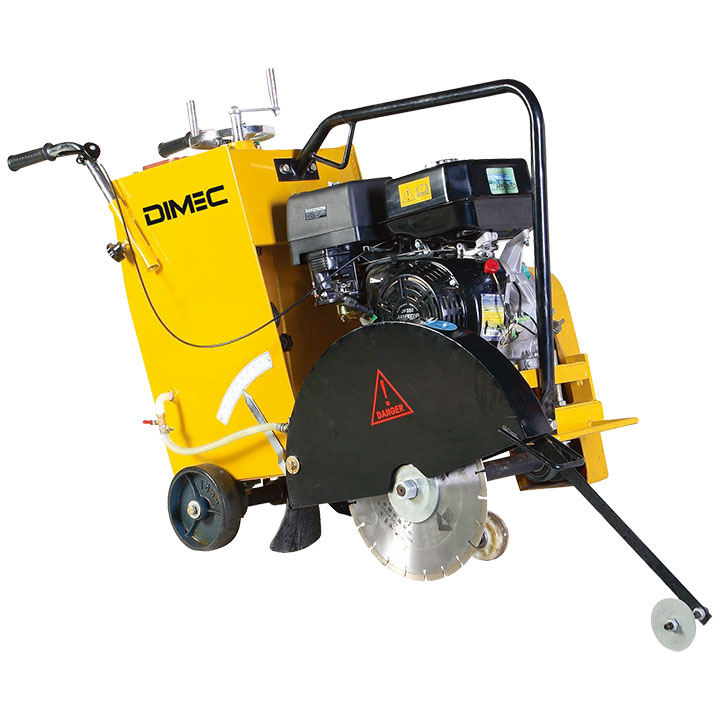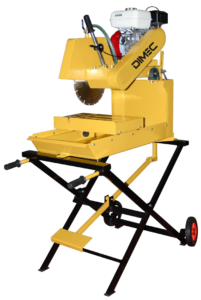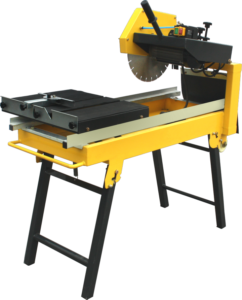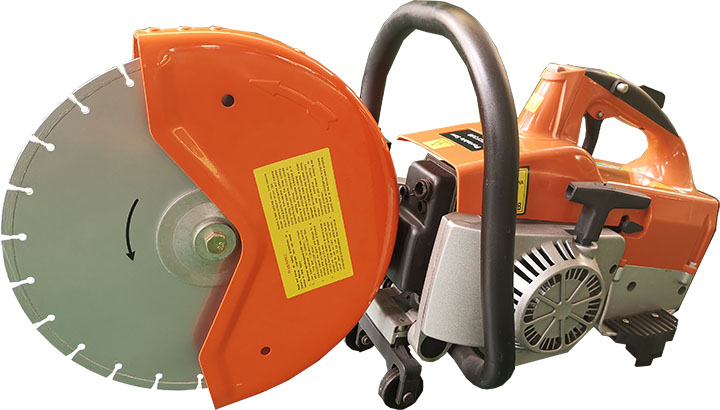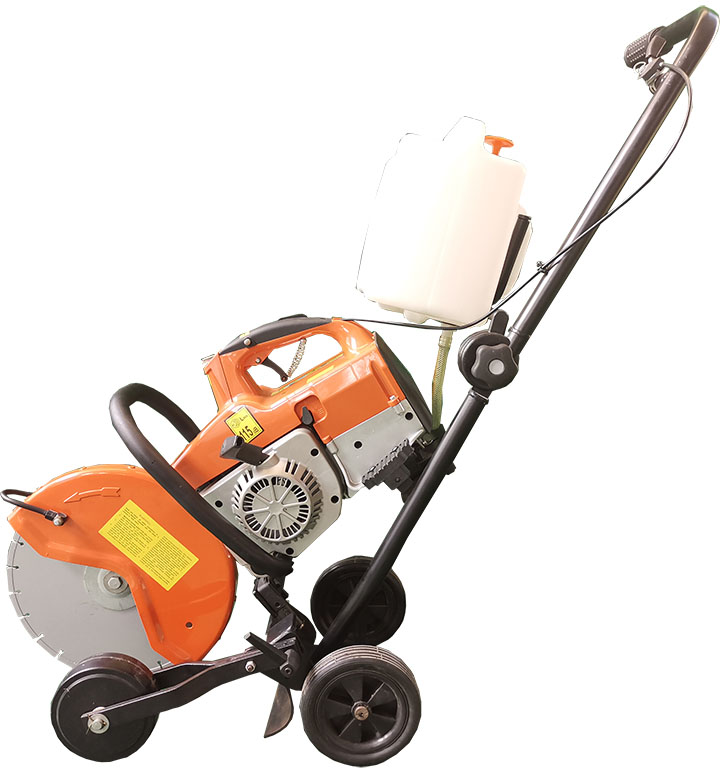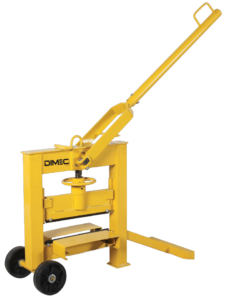Sierra de suelo
Cuando busque una sierra para suelos de hormigón, podemos ayudarle a seleccionar la cortadora de hormigón más adecuada para su negocio.
Descripción
Las sierras para hormigón, también conocidas como consierras o sierras viales, son herramientas potentes diseñadas específicamente para cortar materiales duros como hormigón, asfalto, ladrillo y mampostería. Tanto si trabajas en una obra de construcción, en un proyecto de demolición o en una reforma doméstica, las sierras para hormigón son esenciales para realizar cortes precisos y eficaces.
La cortadora de suelos con conductor a pie es ideal para cualquier trabajo que requiera potencia y portabilidad. Esta sierra compacta y ligera ha sido diseñada para ofrecer maniobrabilidad y fiabilidad. Además, su perfecta distribución del peso se traduce en una excelente estabilidad mientras sierra. Se utiliza ampliamente en trabajos de servicio, mantenimiento de carreteras, trabajos de socorro, etc.
Las sierras de suelo PME son adecuadas para cortar juntas de dilatación en superficies de asfalto y hormigón con un disco de diamante.
También pueden utilizarse para cortar asfalto para el mantenimiento de carreteras.
Las aplicaciones típicas incluyen suelos y aparcamientos y el corte de la superficie de las carreteras antes de los trabajos de excavación.
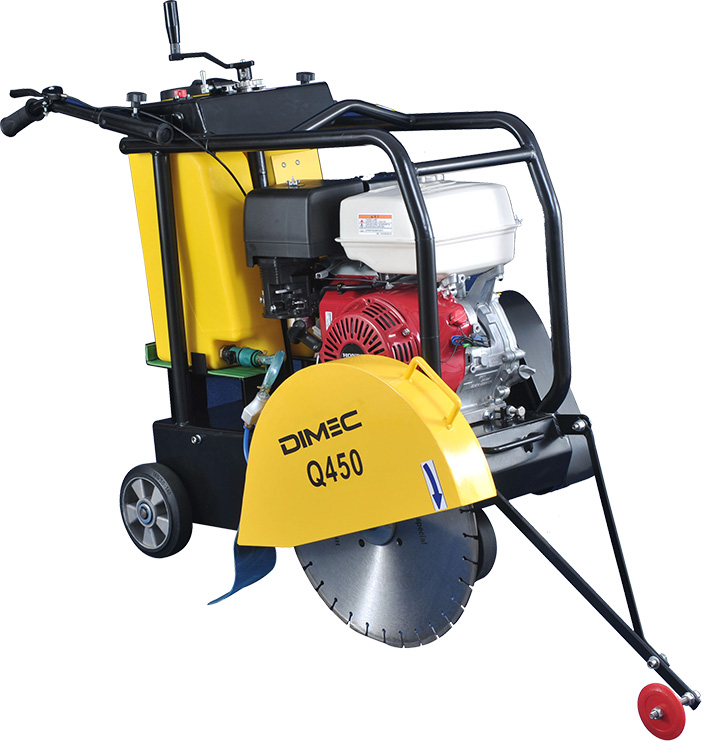
Características
Facilidad de uso
Mango de diseño humanizado con un manejo fácil y cómodo. Diseñado para el montaje izquierdo o derecho del protector de la cuchilla proporciona un fácil acceso para el cambio de la cuchilla y la inspección.
Profundidad de corte ajustable
La manivela puede ajustar fácilmente la profundidad de corte. El dispositivo de elevación se bloquea manualmente, lo que garantiza la misma profundidad de corte.
Barra guía
La barra-guía con función anti-curvatura y anti-vibración, para asegurar un corte recto, extender la vida útil de la cuchilla y de la máquina.
Depósito de agua
El depósito de agua desmontable de gran capacidad suministra agua a ambos lados de la cuchilla, reduce la temperatura de la cuchilla y frena el polvo al cortar.
Parámetros del producto
| Motor | Honda / Robin / Loncin / Motor diesel |
|---|---|
| Tipo de motor | Motor de gasolina/diésel,monocilíndrico,4 tiempos,refrigerado por aire |
| Profundidad de corte máx. | 12,5 cm |
| Longitud de corte máx. | 42 cm |
| Tamaño de la cuchilla | 350 mm |
| N.W./G.W. | 115/125 kg |
| Paquete (L x A x A) | 127x70x100 cm |
| Motor | Motor eléctrico de 2,2 kW |
|---|---|
| Velocidad de la cuchilla | 2800 rpm |
| Diámetro de la cuchilla | 300 mm ; 350 mm |
| Profundidad de corte máx. | 11 cm |
| Longitud de corte máx. | 70 cm |
| N.W./G.W. | 76/86 kg |
| Paquete (L x A x A) | 113x56x55 cm |
| Tipo de motor | Motor de gasolina monocilíndrico de 2 tiempos refrigerado por aire |
|---|---|
| Potencia del motor | 3,0 kW / 4 CV |
| Desplazamiento | 65 cc |
| Velocidad del motor | 8500 rpm |
| Combustible mixto | 50:1 (50 gasolina:1 aceite de motor de dos tiempos) |
| Capacidad del depósito | 1.5 L |
| Profundidad de corte máx. | 11,5 cm |
| Velocidad circular máxima | 4850 r/min |
| Cuchilla | 300 mm ; 350 mm |
| N.W./G.W. | 12,5/15 kg |
| Paquete (L x A x A) | 71x36x48 cm |
| Modelo | PME-BS35 | PME-BS40 |
|---|---|---|
| Longitud de la hoja [cm] | 34 | 39 |
| Altura máx. de corte [cm] | 14 | 14 |
| Operate Manual | Manual | Manual |
| N.W./G.W. [kg] | 41/45 | 48/52 |
| Paquete (L x A x A) [cm] | 72x32x62 | 90x32x62 |
Comparación de parámetros
| Modelo | PME-Q300 | PME-Q350 | PME-Q400 | PME-Q420 | PME-Q450 | PME-Q480 | PME-Q520 | PME-Q550 |
|---|---|---|---|---|---|---|---|---|
| Profundidad de corte máx. [cm] | 10 | 11 | 13 | 14 | 16 | 18.5 | 20 | 20 |
| Ajuste de profundidad | Rotación del asa | Rotación del asa | Rotación del asa | Rotación del asa | Rotación del asa | Rotación del asa | Rotación del asa | Rotación del asa |
| Modo de avance | Empuje manual | Empuje manual | Empuje manual | Empuje manual | Empuje manual | Empuje manual | Empuje manual | Semi-autopropulsado |
| Capacidad del depósito de agua [L] | 12 | 10 | 25 | 35 | 30 | 30 | 32 | 40 |
| Tamaño de la hoja [mm] | 300;350 | 300;350 | 300;350;400 | 300;350;400;450 | 400;450 | 400;450;500 | 400;450;500 | 400;450;500 |
| P.N./P.G. [kg] | 70/75 | 70/75 | 90/100 | 120/130 | 115/125 | 105/115 | 140/150 | 170/180 |
| Paquete (L x A x A) [cm] | 85x50x79 | 83x55x95 | 99x55x87 | 108x58x105 | 91x58x105 | 93x56x106 | 110x57x112 | 115x57x105 |
Aplicación
Ventajas de la sierra de hormigón
Motor potente
Equipada con un motor de alto par que proporciona una gran potencia para cortar diversos materiales, como hormigón, asfalto y piedra.
Corte de precisión
Diseñada para cortes exactos y rectos, garantizando resultados limpios y precisos para diversas aplicaciones, como el corte de juntas de dilatación y trabajos de demolición.
Control de profundidad
Dispone de mecanismos de control de profundidad ajustables, que permiten profundidades de corte precisas y minimizan el corte excesivo o insuficiente.
Características de seguridad
Incorpora características de seguridad como protectores de cuchillas, botones de parada de emergencia y sistemas de suministro de agua para reducir el polvo y los residuos durante el funcionamiento.
Tipos de sierras para hormigón
Sierras manuales para hormigón
Las sierras manuales para hormigón son portátiles y versátiles. Son ideales para proyectos pequeños y medianos en los que la maniobrabilidad es clave. Estas sierras son perfectas para cortar a través de paredes, suelos y otros espacios reducidos donde las sierras más grandes no pueden llegar. Entre sus ventajas se incluyen la facilidad de uso, la portabilidad y un coste relativamente bajo.
Sierras de Hormigón con operador a pie
Las motosierras son más grandes y potentes que los modelos manuales. Suelen utilizarse para cortar carreteras, entradas de vehículos y grandes losas de hormigón. Estas sierras ofrecen mayor estabilidad y capacidades de corte más profundas, lo que las hace ideales para aplicaciones pesadas. La principal ventaja es su capacidad para manejar proyectos a gran escala de manera eficiente.
Sierras de mesa
Las sierras de mesa para hormigón son máquinas especializadas diseñadas para realizar cortes de precisión. Se suelen utilizar en talleres de fabricación donde la precisión es primordial. Entre sus características se incluyen cuchillas ajustables, sistemas de refrigeración por agua y mesas de trabajo robustas. Estas sierras son esenciales para cortar baldosas, adoquines y otros elementos decorativos de hormigón.
Sierras de hilo
Las sierras de hilo utilizan un hilo o cable incrustado con segmentos de diamante para cortar el hormigón. Estas sierras son especialmente útiles para realizar cortes profundos y demoler grandes estructuras. Suelen utilizarse en cortes bajo el agua o en situaciones en las que las sierras tradicionales resultan poco prácticas. Entre sus ventajas están la posibilidad de cortar formas complejas y la reducción de las vibraciones durante el corte.
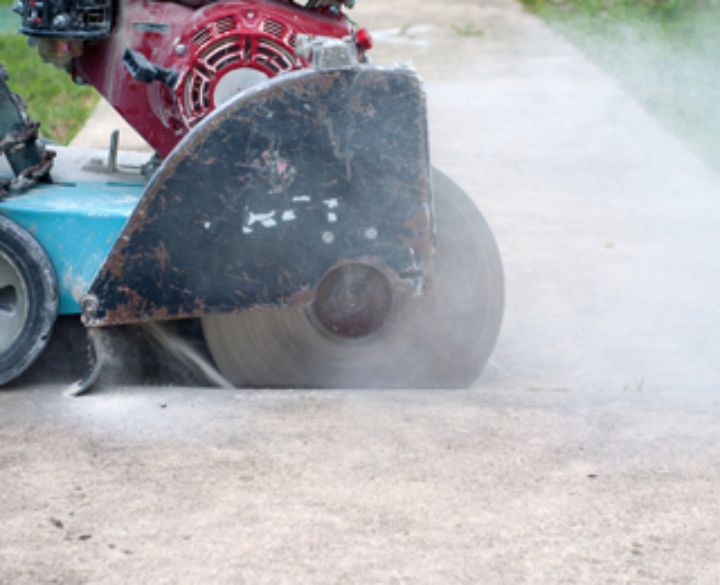
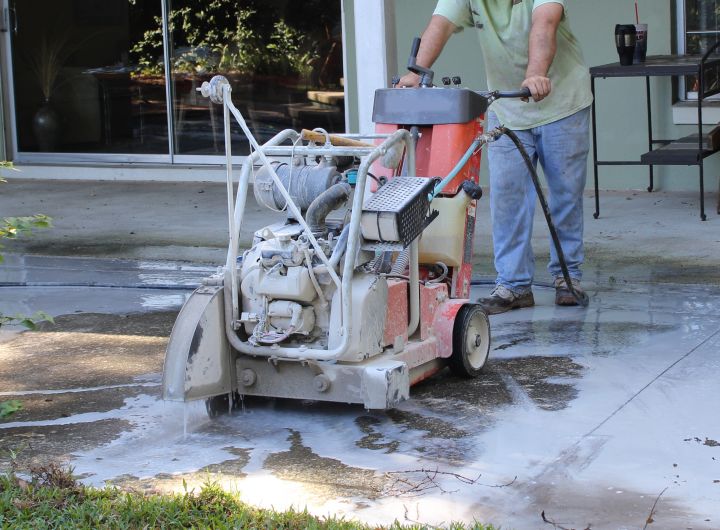
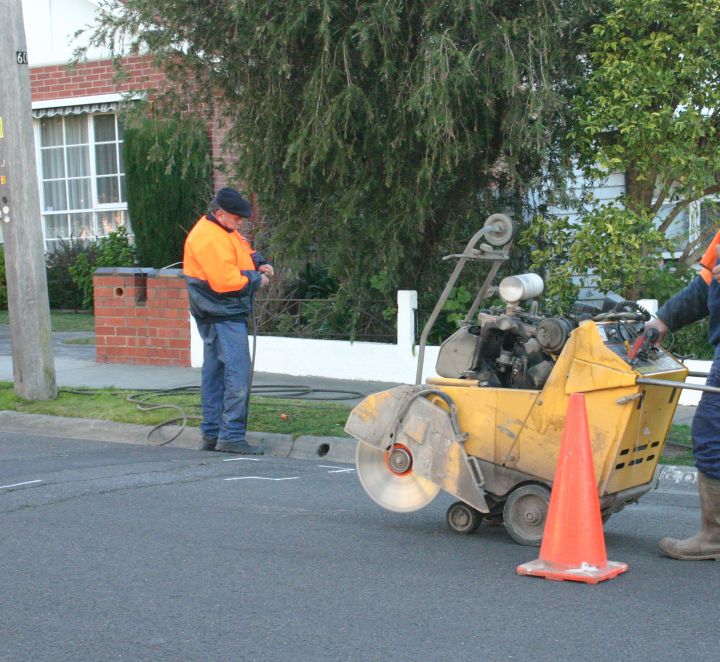
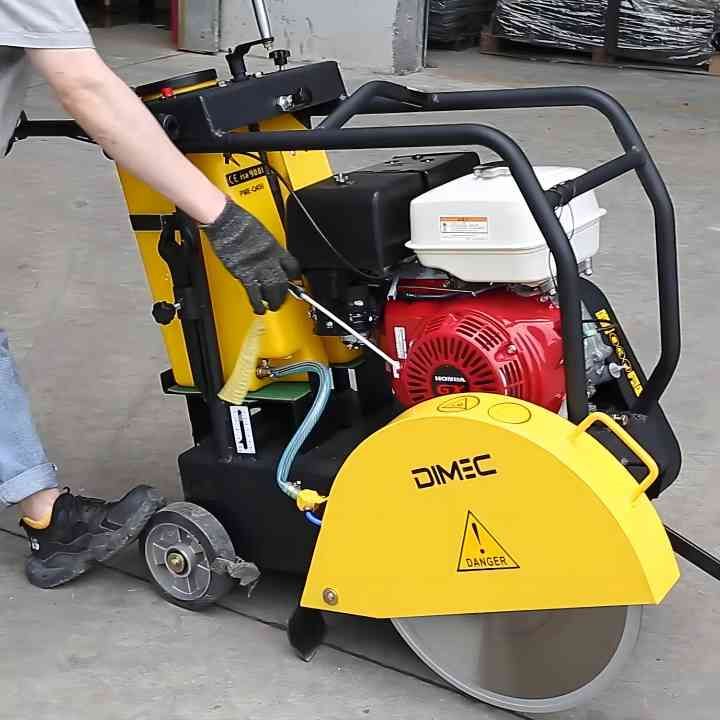
Características principales de las sierras para hormigón
Tipos de cuchillas
Elegir la hoja adecuada es crucial para un corte eficaz. Las hojas de diamante son las más populares para cortar hormigón debido a su durabilidad y potencia de corte. También se utilizan hojas abrasivas, pero se desgastan más rápido y son menos eficientes.
Fuente de energía
Las sierras para hormigón pueden funcionar con gas, electricidad o hidráulica. Las sierras de gas son las más comunes y ofrecen una gran movilidad, pero emiten humos. Las sierras eléctricas son más silenciosas y no producen emisiones, por lo que son adecuadas para uso en interiores. Las sierras hidráulicas son potentes y versátiles, pero requieren una fuente de energía hidráulica.
Profundidad de corte
La profundidad de corte de una sierra determina el grosor del material que puede cortar. Tenga en cuenta la profundidad de corte máxima que necesita para sus proyectos para elegir la sierra adecuada. Las motosierras suelen ofrecer los cortes más profundos, mientras que las sierras manuales están limitadas por su tamaño.
Durabilidad y calidad de construcción
Una construcción robusta garantiza que la motosierra pueda soportar los rigores de un uso intensivo. Busque modelos con bastidores reforzados, materiales de alta calidad y componentes fiables. La durabilidad es especialmente importante para los contratistas profesionales que utilizan sus herramientas con frecuencia.
Características de seguridad
La seguridad debe ser siempre una prioridad. Entre las principales características de seguridad que debe tener en cuenta se incluyen los protectores de la hoja, las funciones de parada de emergencia y los sistemas antivibración. Unas características de seguridad adecuadas no sólo protegen al usuario, sino que también prolongan la vida útil de la motosierra.
Cómo elegir la sierra de hormigón adecuada
Evaluación de las necesidades del proyecto
Evalúe los requisitos específicos de su proyecto. Tenga en cuenta el tipo de material, el grosor de los cortes y el entorno de trabajo. Por ejemplo, una sierra de mano puede ser perfecta para pequeños proyectos en interiores, mientras que una sierra de mano es más adecuada para grandes trabajos en exteriores.
Consideraciones presupuestarias
El precio de las sierras para hormigón oscila entre unos cientos y varios miles de dólares. Determine su presupuesto y compárelo con las características que necesita. A veces, invertir en un modelo de gama alta puede ahorrar dinero a largo plazo gracias a su mayor rendimiento y durabilidad.
Comparación de marcas y modelos
Investigue diferentes marcas y modelos para encontrar el más adecuado. Lea opiniones, compare especificaciones y tenga en cuenta la reputación del fabricante. Marcas populares como Husqvarna, Stihl, Makita y DeWalt son conocidas por su calidad y fiabilidad.
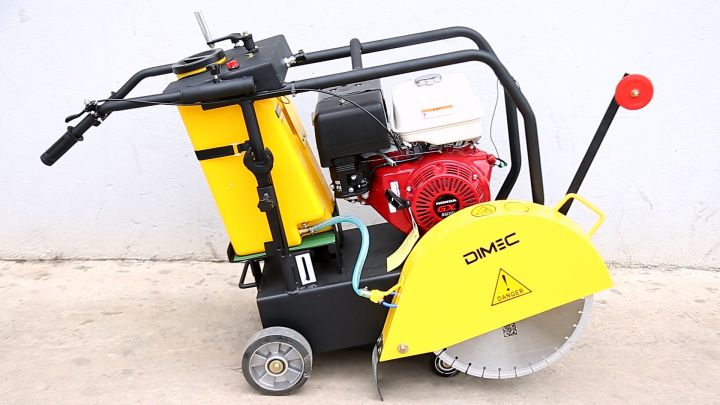
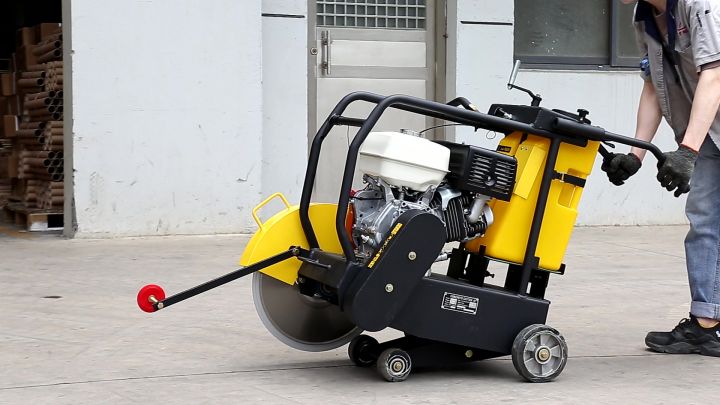
La vida útil de una hoja de sierra para hormigón depende del tipo de hoja, del material que se corte y de la frecuencia de uso. Las hojas de diamante suelen durar más que las abrasivas. Un mantenimiento regular y un uso adecuado pueden prolongar la vida útil de la hoja.
Sí, las sierras para hormigón pueden cortar diversos materiales como ladrillo, piedra y asfalto. Sin embargo, es importante utilizar la hoja adecuada para cada material para garantizar un corte eficaz y evitar daños en la sierra.
Las hojas de diamante se consideran las mejores para cortar hormigón debido a su durabilidad y eficacia de corte. Proporcionan cortes precisos y tienen una vida útil más larga en comparación con otros tipos de discos.
El mantenimiento periódico es crucial para conservar el rendimiento de una sierra para hormigón. Se recomienda realizar un mantenimiento básico, como limpiar e inspeccionar la hoja, después de cada uso. Las revisiones más exhaustivas, incluidas las del motor, deben realizarse periódicamente según las recomendaciones del fabricante.
Sí, existen sierras eléctricas para hormigón y son una gran opción para proyectos en interiores o zonas donde las emisiones son un problema. Son más silenciosas y no producen humos, por lo que son adecuadas para espacios cerrados.
Mantenimiento
Programa de mantenimiento periódico de la cortadora de juntas
| Diariamente antes de empezar | Después de las primeras 5 Hrs. | Después de las primeras 50 Hrs. | Cada Semana o 25 Hrs. | Cada mes o 100 Hrs. | Cada 3 meses o 300 Hrs. | |
|---|---|---|---|---|---|---|
| Comprobar el nivel de combustible | √ | |||||
| Comprobar el nivel de aceite de la máquina | √ | |||||
| Compruebe si hay grietas o fugas en la tubería de combustible y los accesorios. | √ | |||||
| Comprobar y apretar los tornillos de los cilindros del motor | √ | √ | ||||
| Comprobar y apretar la tornillería exterior | √ | √ | ||||
| Comprobar correa trapezoidal | √ | |||||
| Limpiar las aletas de refrigeración del motor | √ | |||||
| Arrancador de retroceso limpio | √ | |||||
| Limpiar el silenciador del motor y la lumbrera de escape | √ |
Nota: Si el rendimiento del motor es pobre, por favor revise, limpie y reemplace los elementos del filtro de aire según sea necesario.
Programa de mantenimiento periódico del motor
| Cada uso | Primer mes o 20 horas | Cada 3 meses o 50 horas | Cada 6 meses o 100 horas | Cada año o 300 horas | ||
|---|---|---|---|---|---|---|
| Aceite de motor | Comprobar nivel | √ | ||||
| Cambia | √ | √ | ||||
| Filtro de aire | Consulte | √ | ||||
| Limpiar | √(1) | |||||
| Sustituir | √☆ | |||||
| Copa de sedimentos | √ | |||||
| Bujía de encendido | Comprobar-Limpiar | √ | ||||
| Sustituir | √ | |||||
| Parachispas (piezas opcionales) | Limpiar | √ | ||||
| Velocidad de ralentí | Comprobar-Ajustar | √(2) | ||||
| Juego de válvulas | Comprobar-Ajustar | √(2) | ||||
| Depósito de combustible y filtro | Limpiar | √(2) | ||||
| Cámara de combustión | Limpiar | Cada 300 horas (2) | ||||
| Línea de combustible | Consulte | Cada 2 años (Sustituir si es necesario) (2) | ||||
☆ Sustituya sólo el tipo de elemento de papel.
(1)Mantenimiento más frecuente cuando se utiliza en zonas polvorientas.
(2)Estos elementos deben ser reparados por su distribuidor a menos que usted disponga de las herramientas adecuadas y tenga conocimientos mecánicos. Consulte los procedimientos de mantenimiento en el manual.
Se realiza cada mes indicado o cada intervalo de horas de funcionamiento, lo que ocurra primero.
